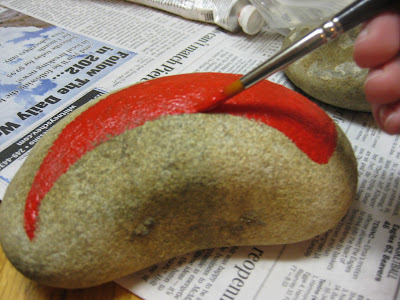 |
| Yellow pear tomatoes, one of the winners of 2011. |
So sorry for the long absence from writing to this blog. Those who know me personally will know and understand exactly what I am talking about. I was also highly engrossed in writing for
Helium, which was having this awesome summer long writing contest, so my time devoted to this blog was taken up by other activities not to mention working outside in the garden during the daylight hours after getting home from work.
Now that December is here, it is a great time to reflect back on what I did during the growing season of 2011 and what worked and did not work for me. We will start with the winners.
Winner: Tomatoes
I started all of my tomatoes as seed indoors under my grow light and they all did wonderfully. When it was time to plant them outdoors, I used black plastic to absorb more heat to help the plants grow, flower, and fruit. I also made an upside-down tomato planter out of a bucket and stuck a seedling in it. All of my hard work paid off and I was able to enjoy a very nice bounty of heirloom tomatoes!
Winner: Lettuce planted in container
I filled a large terra cotta pot with potting soil and sprinkled the surface with seed. After only a week, the seed sprouted and I was able to harvest baby lettuces in 3-4 weeks after that. I allowed a few to continue to grow into larger heads which were also delicious. My only issues was trying to manage the watering schedule as the terra cotta pot did dry out near the surface much more quickly than a plastic pot would. The plants were much more protected from slugs, although I did find a few lurking under the plants during the afternoons when it would warm up during July.
Winner: Rainbow carrots
I had planted the seed for these carrots back in April. Because it was a very cool spring, it did take them a while to really get growing. I did have a few issues with slugs eating the leaves off the crowns of the carrots but they were always able to sprout back up in time. Harvested some very nice roots in September that were around 7 inches long, a victory after struggling with the rock removal!
And now, the losers of the 2011 garden.
Loser: Bell peppers
It wasn't exactly my fault that the summer was cooler than usual. The problem was that the cool temperatures were just perfect for a huge army of slugs to grow and destroy things! In most years, the summer temperatures are high enough that the slugs will not attempt to come out of their hiding places in broad daylight. This became a problem for me and I quickly ran out of Corry's slug and snail death as a consequence of frequent slug baiting. When it did get warmer, the slugs waited until exactly twilight to emerge in a huge group that slowly crept toward my garden. Just like little vampires, they narrowed in on my pepper plants and striped the leaves of one plant at a time. The next morning, I would find only one plant completely void of all leaves but the others untouched. The next night, they would target a different plant, and so on until all of my pepper plants were stripped of leaves. The plants themselves were not dead and did try to put on new growth. The problem was, by then, it was too late in the season to get any kind of harvest of bell peppers. Very disappointing indeed.
 |
| Here is the corn at the beginning of July. It started nicely but soon began to struggle. |
Loser: Red sweet corn
This year, I wanted to try something that was quite foreign to me. I had never grown corn before and knew there would be challenges. I planted the corn directly into the ground at the beginning of June and had germination in a week and a half, which is good for Western Washington. I then realized that the challenge was to try to get the roots of the corn to grow in soil that is chock full of rocks! I had only removed a few at the time of planting and thought nothing of the consequences of leaving the next layer of rocks under the ground. Corn needs a lot of soft loamy soil to grow into and this was definitely the least ideal growing condition for it. As a result, the corn struggled to grow and only reached a height of 18 inches tall at the most. At the end of August, to my great surprise, all of the plants produced pollen followed by miniature corn ears! Some of the earns were pollinated and began to swell but then cooler weather set in and the miniature ears were eaten up by the slugs. I pulled up my tiny corn stalks and examined their tiny root systems. The proof was in front of my eyes: rocky soils can dwarf certain plants.
Now, based on my results, I have a pretty good idea of what works and what doesn't work in this garden. I have decided to try the same crops again for next year but will adjust my methods to see what might work better. In the words of Dr. Loverine Taylor, my plant genetics professor at WSU, a negative result is still a result.
Next post: What I will do differently for the plants in 2012 and the new things I will try to grow!

















